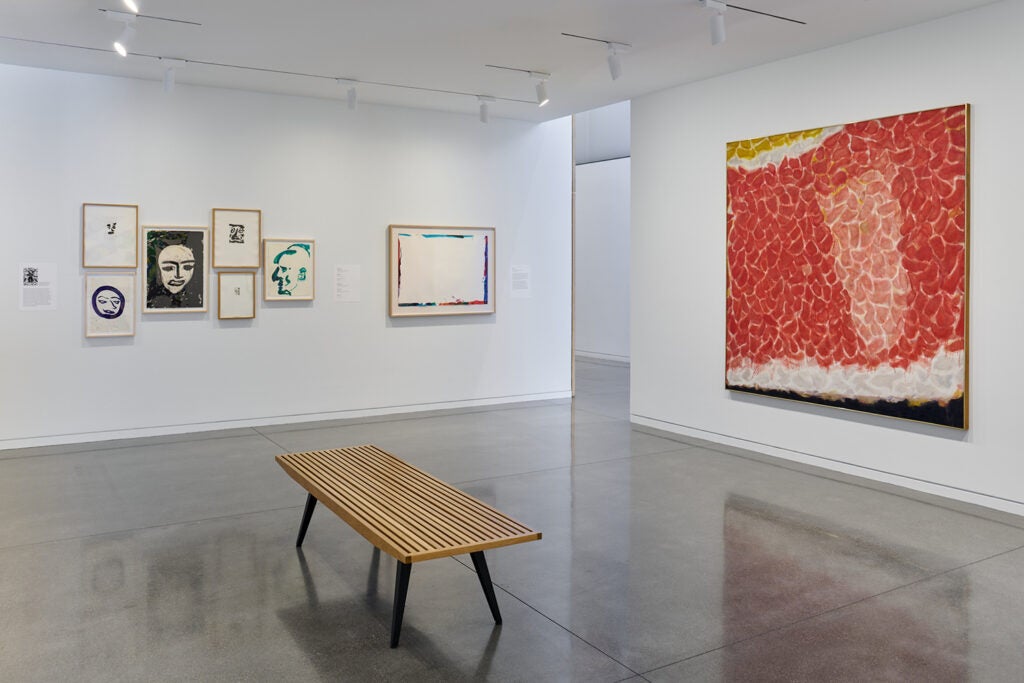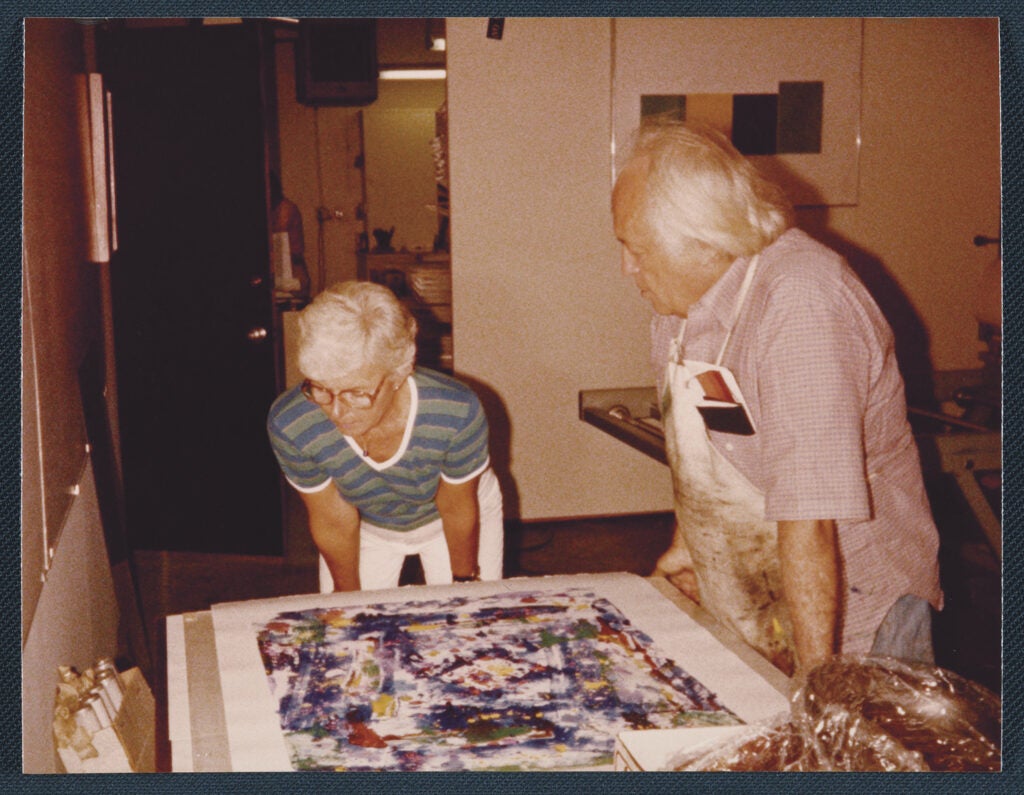The Anderson Collection celebrates the 100th anniversary of Sam Francis’ birthday
A new exhibition at the Anderson Collection offers a close look at the paintings and prints of one of California’s most important postwar artists and his local connections.

Sam Francis Centennial installed in the Wisch Family Gallery at the Anderson Collection at Stanford University. (Image credit: Impart Photography)
A new solo exhibition of works by Sam Francis at the Anderson Collection celebrates the hundredth anniversary of the artist’s birth and highlights his multifaceted connection to the Palo Alto community and the Anderson family.
On view through March 3, 2024, this intimate presentation of works in the Wisch Family Gallery is anchored by two large-scale paintings from the museum’s permanent collection, Red in Red (1955), an early work created while Francis lived in Paris, and The Beaubourg (1977), made after his return to California. The balance of the works on view is devoted to unique works on paper and a group of graphic works produced at 3EP Ltd., the Palo Alto printing press founded by collector Mary Margaret “Moo” Anderson, artist Joseph Goldyne, and gallerist Paula Kirkeby in 1978.
“I am thrilled to be collaborating with Stanford graduate student Emily Chun on this exhibition and celebrating the legacy of Sam Francis by highlighting his energizing relationship to the Bay Area, acknowledging the essential role that art and community play in promoting health, well-being, and a sense of place,” said Jason Linetzky, director of the Anderson Collection.
Born in San Mateo in 1923, Sam Francis began his painting career after a serious illness contracted while training in the Army Air Corps left him immobilized in a hospital in Northern California for a few years. During his recuperation, Francis studied with the artist David Park, who later became a key figure of the Bay Area Figurative Movement. For Francis, painting became a “way back to life.” In the late 1940s, he returned to the University of California, Berkeley, where he was enrolled before enlisting and changed course from pre-med to painting and art history.
At a time when many young artists flocked to New York City, Francis instead moved to Paris in 1950. There, the French tradition of color and light – as embodied in the work of Matisse, Bonnard, and Monet – had a lasting influence on his practice. While abroad, he forged a style that was unmistakably his own, as evidenced in Red in Red, and became one of the most well-known American artists of his generation in Western Europe and Japan, where he first traveled in 1957 and would come to spend significant periods of his later life.
“The addition of Red in Red to the Anderson family collection in 1969 coincided with Hunk’s and Moo’s decision to build a world-class collection of modern and contemporary American art,” said Linetzky. “Francis had established a studio in Santa Monica by that time, and the Andersons knew his work needed to be a part of their collection, which would include significant West Coast representation. In the ensuing decades, the Anderson family was fortunate to acquire additional works by Francis and create a lasting relationship with the artist.”

Sam Francis and Moo Anderson reviewing proofs at 3EP, Ltd., Palo Alto, California, c.1981-82. (Image credit: Family collection of Harry W. and Mary Margaret Anderson)
Return to California
In the early 1970s, Francis began frequent trips to Palo Alto from his studio in Santa Monica to exhibit at Smith-Andersen Gallery and later create prints at 3EP Ltd. The 3EP endeavor was launched by the “3 equal partners” – Anderson, Goldyne, and Kirkeby – to encourage experimentation with the monotype and intaglio processes, such as etching, drypoint, and aquatint. The partners invited a few artists each year to create works at the press, including Francis and the California artists Claire Falkenstein, Ed Moses, and Nathan Oliveira, then a Stanford studio art professor.
While shuttling back and forth between multiple California studios, the Stanford Museum (now the Cantor Arts Center) hosted three solo exhibitions of Francis’ work, which furthered his relationships with the Stanford community and his exposure in the Bay Area. During that time, he embarked on a series of large-scale paintings based on a combination of drips, watery washes, and dense splotches. The Beaubourg is from that series and is typical of his painted work that fuses energy and movement into color.
In 1986, Francis established a studio near the Stanford campus in a former spray shop for cars on Churchill Ave. He invigorated Palo Alto with his artistic output, and his work became widely represented in the collections of the Anderson family and other locals. The intertwining of the lives of Francis and the Anderson family went beyond their 3EP collaboration. Mary Patricia “Putter” Anderson Pence, the daughter of Moo and Hunk Anderson, had her first job out of college working for Francis at his Litho Shop in Santa Monica.
Discovering Francis
Throughout his career, Francis was interested in self-portraits and referred to them collectively as “anima portraits,” a reference to a Jungian archetype. He created them with various mediums, as displayed in the three examples in the exhibition from 3EP and three unique works on loan from the Sam Francis Foundation. These self-portraits do not mirror Francis and his physical features but manifest his essence. These works are psychical rather than physical explorations.
Emily Chun, a PhD candidate in art history, discovered much about Francis while working with the Anderson Collection team to research and prepare gallery texts for this centennial exhibition. “I have always been deeply interested in Francis for his metaphysical bent, as other abstract artists during this period did not so assiduously pursue the infinite and the spiritual the way that Francis did.
“It was fascinating to uncover through archival materials and conversations with those who knew Francis just how important Palo Alto was to him and how, despite his endless globe-trotting and aversion to being tied down to one place, he seemed to always be drawn back to his birthplace, the Bay Area.”